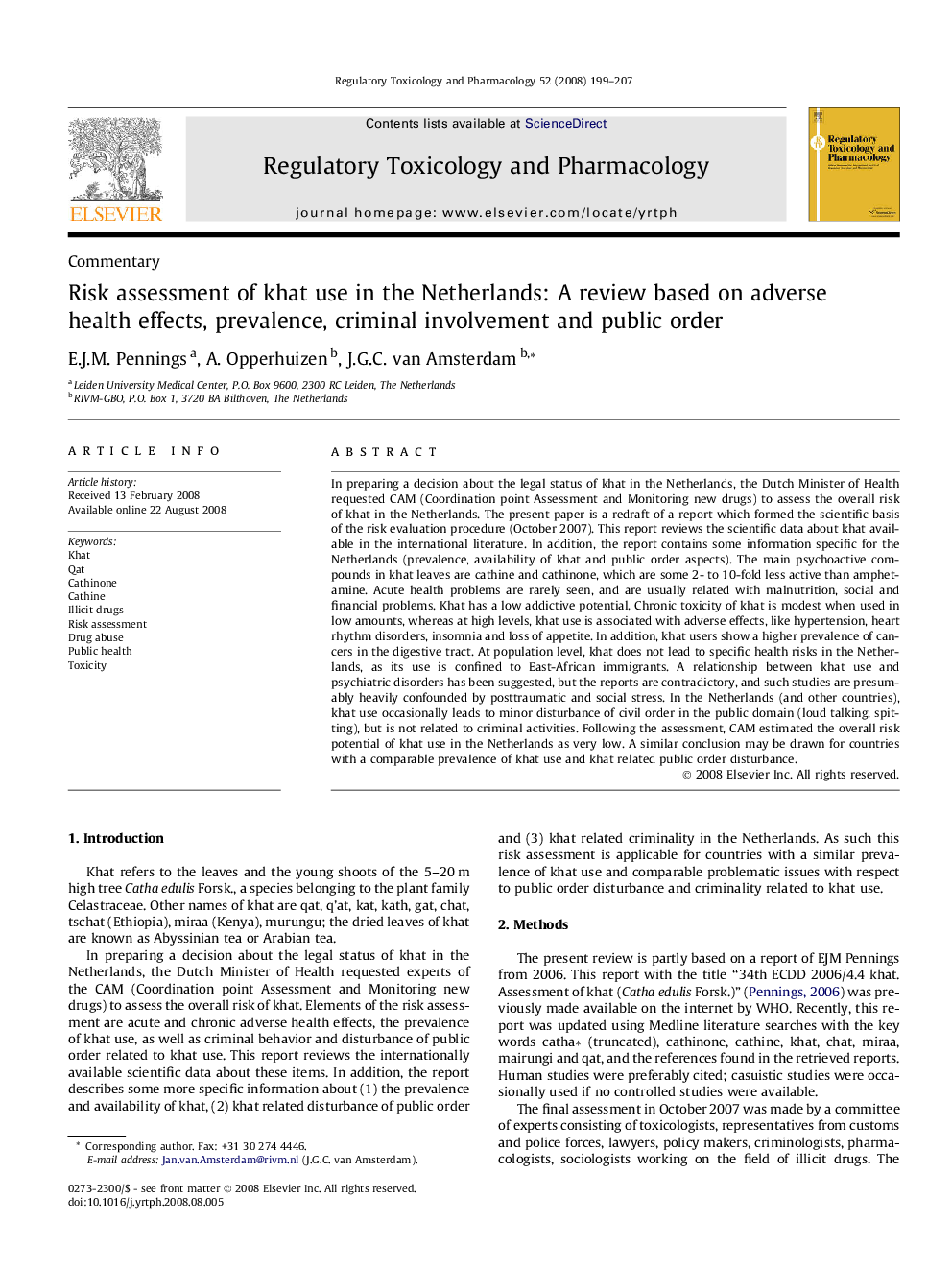| Article ID | Journal | Published Year | Pages | File Type |
|---|---|---|---|---|
| 2592979 | Regulatory Toxicology and Pharmacology | 2008 | 9 Pages |
In preparing a decision about the legal status of khat in the Netherlands, the Dutch Minister of Health requested CAM (Coordination point Assessment and Monitoring new drugs) to assess the overall risk of khat in the Netherlands. The present paper is a redraft of a report which formed the scientific basis of the risk evaluation procedure (October 2007). This report reviews the scientific data about khat available in the international literature. In addition, the report contains some information specific for the Netherlands (prevalence, availability of khat and public order aspects). The main psychoactive compounds in khat leaves are cathine and cathinone, which are some 2- to 10-fold less active than amphetamine. Acute health problems are rarely seen, and are usually related with malnutrition, social and financial problems. Khat has a low addictive potential. Chronic toxicity of khat is modest when used in low amounts, whereas at high levels, khat use is associated with adverse effects, like hypertension, heart rhythm disorders, insomnia and loss of appetite. In addition, khat users show a higher prevalence of cancers in the digestive tract. At population level, khat does not lead to specific health risks in the Netherlands, as its use is confined to East-African immigrants. A relationship between khat use and psychiatric disorders has been suggested, but the reports are contradictory, and such studies are presumably heavily confounded by posttraumatic and social stress. In the Netherlands (and other countries), khat use occasionally leads to minor disturbance of civil order in the public domain (loud talking, spitting), but is not related to criminal activities. Following the assessment, CAM estimated the overall risk potential of khat use in the Netherlands as very low. A similar conclusion may be drawn for countries with a comparable prevalence of khat use and khat related public order disturbance.
